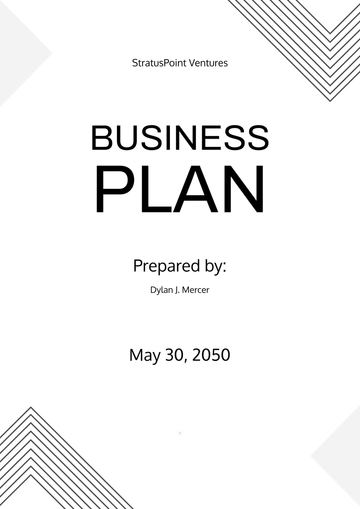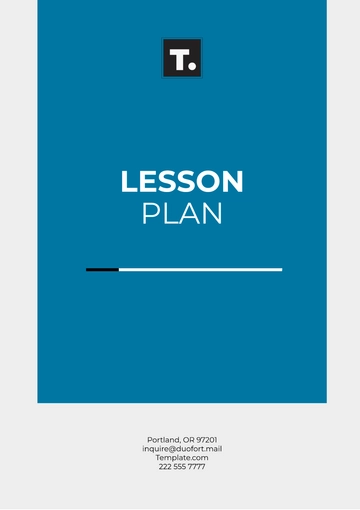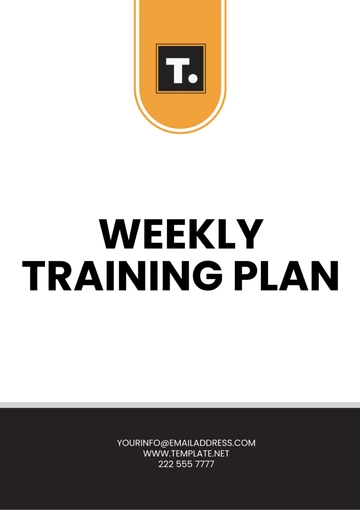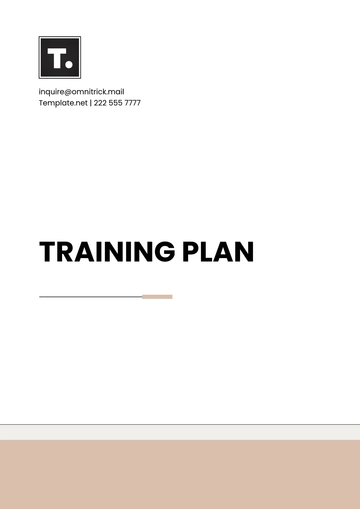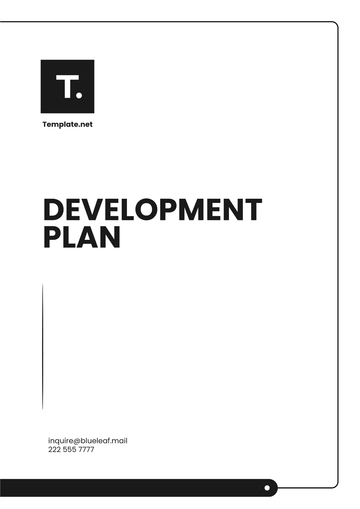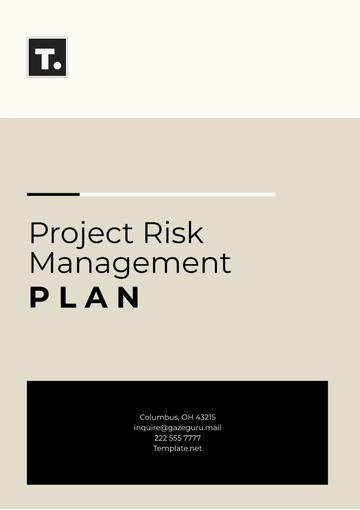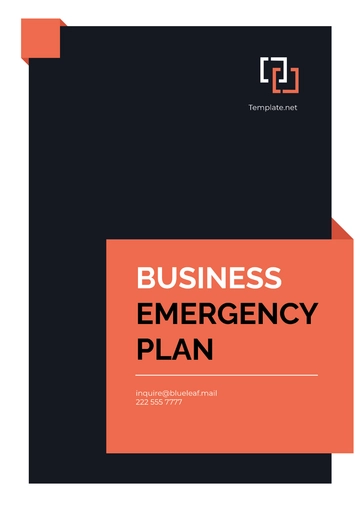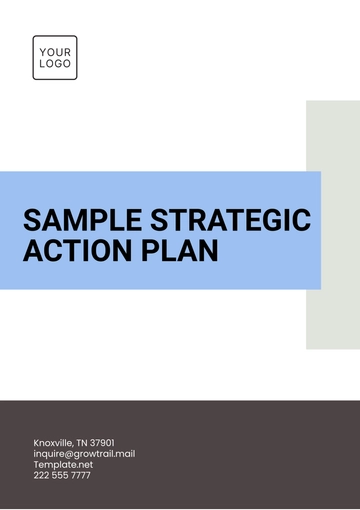Free Defense Strategy
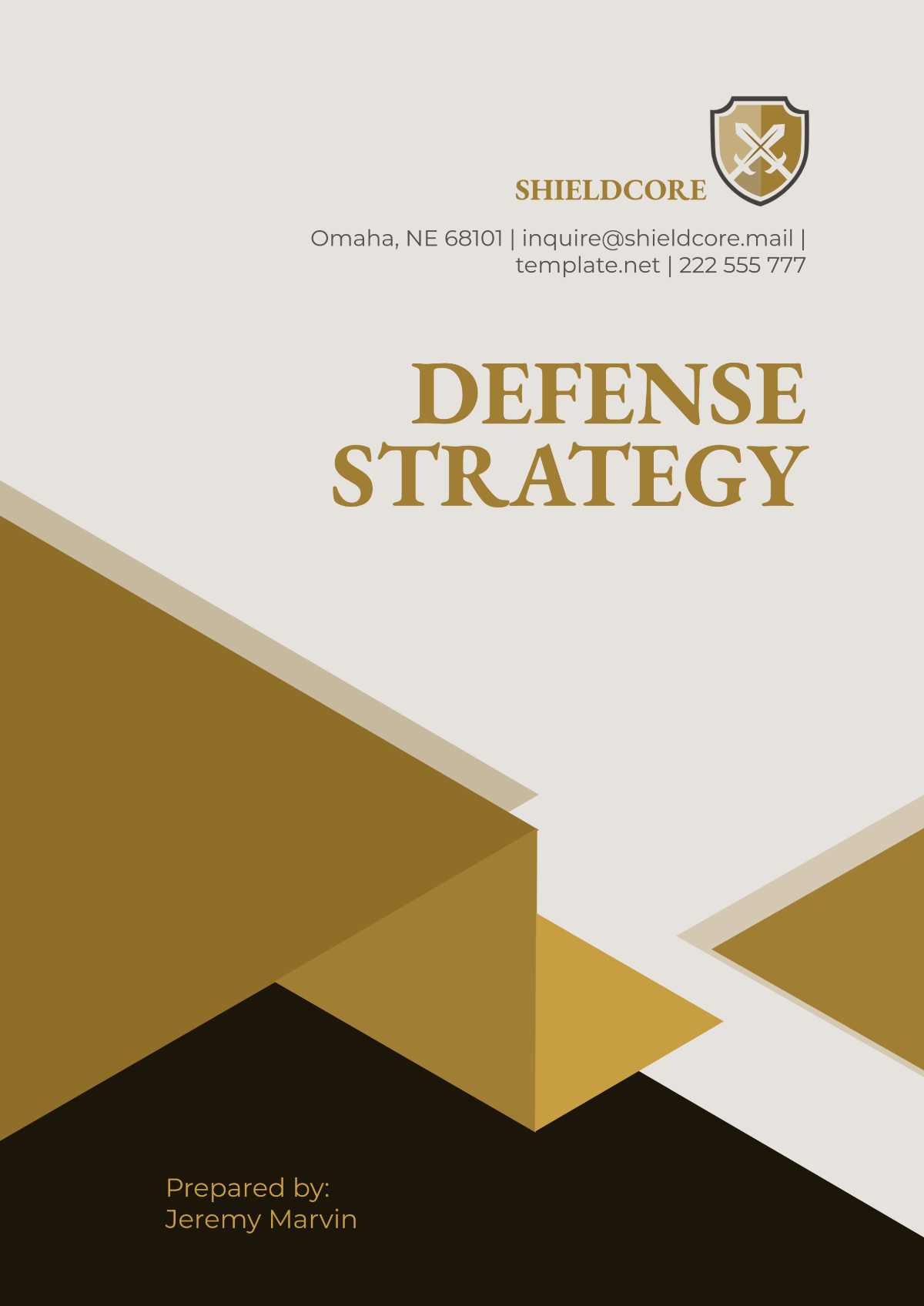
I. Introduction
A. Purpose of the Defense Strategy
The purpose of this strategy is to ensure the continued protection of [Your Company Name]'s assets, personnel, and operational integrity. It outlines actionable steps to mitigate threats, respond to emergencies, and secure competitive advantages. This document serves as a guide for aligning resources with strategic objectives in a rapidly evolving landscape.
B. Scope and Objectives
This strategy applies to all departments within [Your Company Name] and includes partnerships with external stakeholders. Objectives include maintaining operational continuity, safeguarding critical infrastructure, and fostering a resilient organizational culture. By addressing internal and external risks, the strategy ensures preparedness for diverse challenges.
C. Overview of the Strategic Environment
The current strategic environment is characterized by geopolitical instability, rapid technological advancements, and increasing cyber threats. Key adversaries include state-sponsored entities and organized criminal networks targeting proprietary information. Understanding these dynamics is essential for crafting effective defense mechanisms.
II. Strategic Assessment
A. Threat Analysis
Conventional Threats
Key risks include unauthorized access to secured facilities and potential sabotage by disgruntled employees. [Your Company Name] has identified three high-risk locations requiring enhanced security protocols. Historical data shows a [00]% increase in such threats over the last three years.
Asymmetric Threats
Cyberattacks targeting sensitive databases have risen by [00]% in the past fiscal year. External phishing attempts remain the primary vector for breaches, with email-based attacks accounting for [00]% of incidents. Mitigating these threats requires robust email filtering and employee training programs.
Emerging Technologies
Adversaries are leveraging drones for surveillance and unauthorized data collection. The potential for AI-enabled attacks further complicates defense measures. Strategic investments in anti-drone technologies are crucial for countering such risks.
B. Vulnerability Assessment
Critical Infrastructure
Data centers in [State] and [State] are currently operating at [00]% capacity, exposing them to system overloads. Backup systems require immediate upgrades to sustain operational resilience. Enhanced physical security measures, including biometric access controls, are recommended.
Military Capabilities and Gaps
[Your Company Name]'s private security force has a [00]% readiness level, but lacks expertise in drone countermeasures. Training programs in advanced surveillance and interception techniques are planned for Q2. A comprehensive review of existing assets reveals gaps in high-resolution surveillance cameras.
Civilian and Economic Sectors
The primary concern is securing intellectual property against economic espionage. [Second Party Company Name] has been identified as a strategic partner in developing encrypted communication tools. This collaboration will strengthen economic defenses and enhance trust with stakeholders.
C. Intelligence and Surveillance Capabilities
Current surveillance systems monitor [00]% of high-priority assets but lack integration with real-time analytics. Partnerships with [Second Party Company Name] will improve situational awareness through AI-driven analytics. A phased rollout of upgraded systems is scheduled to begin in [Month].
Vulnerability | Current Status | Proposed Action | Timeline |
|---|---|---|---|
Data Centers | 95% Capacity | Upgrade Systems | Q3 |
Security Gaps | 78% Readiness | Training Program | Q2 |
Surveillance | Lacks Analytics | AI Integration | Q1 |
D. SWOT Analysis
Strengths: Strong financial position, experienced leadership, and strategic alliances with [Second Party Company Name].
Weaknesses: Outdated IT infrastructure and limited expertise in drone technologies.
Opportunities: Adoption of AI and advanced analytics to streamline operations.
Threats: Growing sophistication of cyberattacks and geopolitical tensions.
III. Strategic Goals and Priorities
A. National Security Objectives
Protecting organizational sovereignty is paramount to safeguarding long-term viability. [Your Company Name] commits to fortifying its operational bases with state-of-the-art technologies. Collaboration with federal agencies ensures alignment with national security priorities.
Maintaining strategic alliances with private and public entities enhances [Your Company Name]'s influence in key markets. Quarterly joint drills are planned to strengthen coordination in crisis scenarios. Intelligence-sharing agreements with trusted partners bolster situational awareness.
Ensuring economic stability involves streamlining internal processes to minimize disruptions. Investment in renewable energy sources reduces dependency on volatile markets. Resilience planning ensures operational continuity under adverse conditions.
B. Military Objectives
Strengthening deterrence capabilities is critical to reducing the likelihood of hostile actions. [Your Company Name] plans to deploy advanced surveillance systems to monitor high-risk zones continuously. This initiative will involve a $[00]M investment in next-generation technologies.
Enhancing rapid response and readiness involves conducting biannual training exercises for security personnel. These drills will simulate diverse scenarios, such as cyberattacks and physical intrusions. A [00]% increase in personnel is projected to meet future demands.
Modernizing equipment and technology is essential for maintaining a competitive edge. Planned upgrades include integrating autonomous systems and high-resolution cameras. Collaboration with [Second Party Company Name] ensures access to cutting-edge solutions.
C. Integration of Civilian and Military Efforts
Effective communication between civilian and military units will be facilitated through a centralized command center. Shared resources, such as transport vehicles and medical supplies, will optimize emergency responses. Public-private partnerships are being explored to develop dual-use technologies.
D. Resource Allocation and Sustainability
Budget allocations prioritize critical upgrades and workforce expansion. The 2025 fiscal year budget includes a [00]% increase for cybersecurity investments. Quarterly audits ensure funds are utilized efficiently.
Sustainability measures focus on energy efficiency and waste reduction in operations. Solar power installations at key facilities are expected to cut costs by [00]%. Environmental impact assessments guide future infrastructure projects.
IV. Defense Operations Framework
A. Proactive Measures
Forward deployment strategies will ensure immediate responses to emerging threats. Key assets will be stationed near high-priority regions identified by intelligence teams. This approach reduces response times by up to [00]%.
Preemptive cyber defense measures include deploying real-time threat monitoring systems. These systems detect and neutralize malware within seconds of detection. Partnerships with leading cybersecurity firms bolster this initiative.
Preventive strategies involve continuous education for employees and stakeholders. Workshops on recognizing phishing attempts and securing personal devices will be mandatory. Annual compliance checks reinforce adherence to best practices.
B. Defensive Measures
Border and maritime security are enhanced through drone patrols and AI-powered surveillance. These systems provide real-time feedback to command centers, ensuring rapid decision-making. Collaborative exercises with coastal authorities are scheduled for Q3.
Cybersecurity protocols are updated to reflect evolving threats. Two-factor authentication and encrypted communications are now mandatory for all personnel. A $[00]M investment in firewalls and intrusion detection systems has been allocated for FY 2025.
Air defense systems are being modernized to counter emerging aerial threats. Anti-drone technologies will be deployed across critical facilities. Training programs ensure personnel are proficient in operating advanced systems.
C. Crisis Response and Contingency Planning
Emergency mobilization protocols will be tested through quarterly drills. These simulations will include scenarios such as natural disasters and terrorist attacks. Updated checklists and procedures are distributed to all departments.
Disaster relief operations are prioritized in collaboration with NGOs and government agencies. Supply chain partnerships ensure timely delivery of essential resources during crises. A reserve fund of $[00]M is established for emergency expenditures.
Humanitarian assistance includes providing shelters and medical aid during large-scale incidents. Collaboration with [Second Party Company Name] enhances logistical support capabilities. Community outreach programs foster public trust and cooperation.
D. Regional and Global Cooperation
Joint exercises with international partners strengthen interoperability. Annual simulations focus on combating cyberattacks and coordinating disaster responses. Memorandums of Understanding (MOUs) with allied nations outline shared responsibilities.
Information-sharing agreements enable real-time updates on evolving threats. Secure platforms are developed to facilitate confidential exchanges. Trust-building initiatives ensure long-term collaboration.
Partnerships with global organizations provide access to advanced technologies and best practices. Participation in forums and think tanks keeps [Your Company Name] informed of emerging trends. Representation in international summits highlights the company’s commitment to global security.
V. Modernization and Innovation
A. Investment in Emerging Technologies
AI and autonomous systems are prioritized for enhancing operational efficiency. Drones equipped with facial recognition are deployed for surveillance tasks. A $[00]M budget is allocated for integrating these technologies.
Cyber defense tools, including advanced firewalls and predictive analytics, are in development. Partnerships with industry leaders ensure access to cutting-edge solutions. Implementation is scheduled for completion by Q4.
Space-based capabilities include satellite surveillance and secure communication systems. Collaboration with space technology firms expands these capabilities. A feasibility study is underway to explore satellite deployment options.
B. Research and Development Initiatives
Dedicated R&D teams focus on next-generation security solutions. Projects include developing AI-driven threat analysis platforms and energy-efficient systems. Results are expected to be presented at the annual innovation summit.
Collaboration with universities and think tanks drives innovation. Internships and joint projects foster knowledge sharing. The initiative aims to recruit top talent from research institutions.
Pilot programs test prototypes in controlled environments. Feedback from these tests informs large-scale deployments. A pilot for autonomous patrol vehicles is scheduled for Q3.
C. Training and Education for Personnel
Comprehensive training programs ensure readiness for emerging challenges. Courses cover areas such as AI integration, drone operations, and cybersecurity protocols. Annual certifications validate skill levels.
Cross-functional workshops promote collaboration among teams. Scenario-based exercises simulate real-world challenges. Feedback sessions identify areas for improvement.
Scholarships and sponsorships for advanced studies attract top talent. Partnerships with leading universities enhance career development opportunities. These programs support long-term skill-building efforts.
D. Partnerships with Industry and Academia
Strategic alliances with technology firms accelerate innovation. Joint ventures with [Second Party Company Name] have resulted in two successful product launches. A third project is expected to begin in Q1.
Academic partnerships facilitate cutting-edge research. Grants and funding opportunities encourage groundbreaking studies. Annual reviews evaluate the impact of these initiatives.
Industry collaborations provide access to specialized expertise. Workshops and conferences bring together experts to share insights. The knowledge gained informs strategic decisions.
VI. Resource Management
A. Budgetary Considerations and Funding Allocation
A $[00]M annual budget supports defense initiatives. Allocation priorities include technology upgrades, personnel training, and infrastructure improvements. Regular audits ensure transparency and efficiency.
Contingency funds are established for unforeseen emergencies. These reserves provide financial flexibility during crises. Strategic planning minimizes the need for additional funding requests.
External funding sources, such as government grants, are pursued to supplement budgets. Collaboration with [Second Party Company Name] enhances grant applications. Successful bids have secured $[00]M in additional resources.
B. Workforce and Resource Development
Recruitment strategies focus on hiring personnel with expertise in cybersecurity, engineering, and data analytics. Partnerships with leading recruitment firms streamline the hiring process. New employees undergo a three-month intensive training program.
Retention programs include competitive benefits and opportunities for career advancement. Employees are encouraged to pursue certifications in relevant fields. Regular surveys identify areas for improving workplace satisfaction.
Resource development initiatives include upgrading existing tools and expanding operational facilities. Plans are underway to build a new training center in [State]. Resource sharing with strategic partners optimizes costs and enhances capabilities.
VII. Monitoring and Evaluation
A. Performance Metrics
Key Performance Indicators (KPIs) track progress across all strategic initiatives. Metrics include response times, budget adherence, and cybersecurity incident rates. Quarterly reports provide actionable insights for leadership.
Employee performance is evaluated through annual reviews and skill assessments. Training completion rates and feedback scores are used to measure effectiveness. High performers are recognized with awards and incentives.
Stakeholder satisfaction is gauged through surveys and feedback mechanisms. Collaboration metrics assess the success of partnerships. Regular updates ensure transparency and alignment with goals.
B. Auditing and Compliance
Internal audits ensure adherence to regulatory requirements and organizational policies. Comprehensive reviews are conducted biannually. Recommendations are implemented within six months of report issuance.
Compliance training is mandatory for all personnel. Courses cover legal, ethical, and procedural standards. Certification renewals are tracked to ensure continuous compliance.
External audits by accredited agencies validate the effectiveness of defense strategies. Annual certifications enhance credibility with stakeholders. Transparency reports are shared with partners and regulatory bodies.
C. Feedback and Continuous Improvement
Feedback loops involve collecting data from employees, partners, and stakeholders. Regular meetings provide a platform for discussing improvements. Implemented changes are reviewed for effectiveness after six months.
Innovation workshops encourage brainstorming and creative problem-solving. Ideas generated during these sessions are evaluated for feasibility and impact. Selected initiatives are fast-tracked for implementation.
Continuous improvement programs focus on refining processes and systems. Lessons learned from past incidents inform future strategies. Success stories are shared to promote best practices across the organization.
VIII. Communication and Coordination
A. Internal Communication
Regular briefings ensure all teams are informed of strategic updates. Weekly bulletins summarize key developments and action items. Leadership fosters a culture of transparency and accountability.
Digital platforms facilitate real-time communication across departments. Collaboration tools streamline workflows and decision-making processes. Emergency alerts are disseminated through multiple channels.
Feedback mechanisms allow employees to voice concerns and suggestions. Anonymous surveys ensure honest input. Responses are reviewed and addressed promptly.
B. External Communication
Public relations efforts highlight [Your Company Name]'s commitment to security and innovation. Press releases and media engagements reinforce the organization’s reputation. Social media campaigns increase visibility and public trust.
Stakeholder communication involves regular updates on strategic progress. Quarterly meetings and reports ensure alignment with partners and investors. Transparent communication strengthens relationships and builds confidence.
Crisis communication plans outline protocols for addressing emergencies. Pre-drafted statements ensure timely and accurate responses. Media training equips spokespersons to handle public inquiries effectively.
C. Coordination with Partners
Joint task forces facilitate collaboration on shared objectives. Regular meetings and drills strengthen coordination. Shared resources optimize efficiency and reduce costs.
Technology integration ensures seamless communication and data sharing. Secure systems protect sensitive information during collaborations. Real-time updates enhance situational awareness.
Partnership agreements outline roles, responsibilities, and expectations. Clear guidelines prevent misunderstandings and foster mutual trust. Regular reviews assess the effectiveness of collaborations.
D. Public Engagement and Outreach
Community engagement programs promote awareness and support for defense initiatives. Events such as open houses and workshops foster public trust. Educational campaigns highlight the importance of security measures.
Partnerships with local organizations address community-specific needs. Joint efforts in disaster response and humanitarian aid strengthen relationships. Success stories are shared through newsletters and social media.
Corporate social responsibility initiatives demonstrate [Your Company Name]’s commitment to societal well-being. Investments in education, healthcare, and infrastructure benefit local communities. Positive publicity enhances the organization’s image.
IX. Contingency Planning and Risk Mitigation
A. Emergency Response Plans
Detailed protocols guide actions during crises such as natural disasters, cyberattacks, and security breaches. Teams are trained in rapid assessment and response techniques. Regular drills ensure preparedness across all departments.
Evacuation plans include designated safe zones and transport arrangements. Maps and guidelines are readily accessible to all employees. Partnerships with local authorities streamline coordination during emergencies.
Recovery strategies focus on restoring operations within 48 hours of an incident. Backup systems and data recovery plans minimize downtime. Post-incident reviews identify areas for improvement.
B. Risk Assessment Models
Advanced analytics identify potential risks and their impact on operations. Predictive models highlight vulnerabilities and recommend countermeasures. Regular updates ensure the models remain relevant to evolving threats.
Scenario planning tests the organization’s readiness for diverse challenges. Workshops simulate real-world situations to refine response strategies. Lessons learned inform future planning efforts.
Risk tolerance levels are established for various scenarios. Guidelines ensure balanced decision-making during crises. Leadership reviews risk assessments quarterly to align with organizational goals.
C. Emergency Preparedness and Response
Emergency preparedness includes detailed plans for addressing potential threats, such as natural disasters, cyberattacks, and physical intrusions. Regular training sessions ensure employees are familiar with evacuation routes, emergency contacts, and recovery procedures. Partnerships with local authorities enhance coordination and resource allocation during crises.
- 100% Customizable, free editor
- Access 1 Million+ Templates, photo’s & graphics
- Download or share as a template
- Click and replace photos, graphics, text, backgrounds
- Resize, crop, AI write & more
- Access advanced editor
Enhance your organizational security with the Defense Strategy Template from Template.net. This fully editable and customizable template streamlines your planning process, ensuring professional-quality strategies. Designed for efficiency, it integrates seamlessly with the AI Editor Tool, empowering you to craft tailored solutions effortlessly. Stay prepared and ahead with this essential resource for strategic excellence.
You may also like
- Finance Plan
- Construction Plan
- Sales Plan
- Development Plan
- Career Plan
- Budget Plan
- HR Plan
- Education Plan
- Transition Plan
- Work Plan
- Training Plan
- Communication Plan
- Operation Plan
- Health And Safety Plan
- Strategy Plan
- Professional Development Plan
- Advertising Plan
- Risk Management Plan
- Restaurant Plan
- School Plan
- Nursing Home Patient Care Plan
- Nursing Care Plan
- Plan Event
- Startup Plan
- Social Media Plan
- Staffing Plan
- Annual Plan
- Content Plan
- Payment Plan
- Implementation Plan
- Hotel Plan
- Workout Plan
- Accounting Plan
- Campaign Plan
- Essay Plan
- 30 60 90 Day Plan
- Research Plan
- Recruitment Plan
- 90 Day Plan
- Quarterly Plan
- Emergency Plan
- 5 Year Plan
- Gym Plan
- Personal Plan
- IT and Software Plan
- Treatment Plan
- Real Estate Plan
- Law Firm Plan
- Healthcare Plan
- Improvement Plan
- Media Plan
- 5 Year Business Plan
- Learning Plan
- Marketing Campaign Plan
- Travel Agency Plan
- Cleaning Services Plan
- Interior Design Plan
- Performance Plan
- PR Plan
- Birth Plan
- Life Plan
- SEO Plan
- Disaster Recovery Plan
- Continuity Plan
- Launch Plan
- Legal Plan
- Behavior Plan
- Performance Improvement Plan
- Salon Plan
- Security Plan
- Security Management Plan
- Employee Development Plan
- Quality Plan
- Service Improvement Plan
- Growth Plan
- Incident Response Plan
- Basketball Plan
- Emergency Action Plan
- Product Launch Plan
- Spa Plan
- Employee Training Plan
- Data Analysis Plan
- Employee Action Plan
- Territory Plan
- Audit Plan
- Classroom Plan
- Activity Plan
- Parenting Plan
- Care Plan
- Project Execution Plan
- Exercise Plan
- Internship Plan
- Software Development Plan
- Continuous Improvement Plan
- Leave Plan
- 90 Day Sales Plan
- Advertising Agency Plan
- Employee Transition Plan
- Smart Action Plan
- Workplace Safety Plan
- Behavior Change Plan
- Contingency Plan
- Continuity of Operations Plan
- Health Plan
- Quality Control Plan
- Self Plan
- Sports Development Plan
- Change Management Plan
- Ecommerce Plan
- Personal Financial Plan
- Process Improvement Plan
- 30-60-90 Day Sales Plan
- Crisis Management Plan
- Engagement Plan
- Execution Plan
- Pandemic Plan
- Quality Assurance Plan
- Service Continuity Plan
- Agile Project Plan
- Fundraising Plan
- Job Transition Plan
- Asset Maintenance Plan
- Maintenance Plan
- Software Test Plan
- Staff Training and Development Plan
- 3 Year Plan
- Brand Activation Plan
- Release Plan
- Resource Plan
- Risk Mitigation Plan
- Teacher Plan
- 30 60 90 Day Plan for New Manager
- Food Safety Plan
- Food Truck Plan
- Hiring Plan
- Quality Management Plan
- Wellness Plan
- Behavior Intervention Plan
- Bonus Plan
- Investment Plan
- Maternity Leave Plan
- Pandemic Response Plan
- Succession Planning
- Coaching Plan
- Configuration Management Plan
- Remote Work Plan
- Self Care Plan
- Teaching Plan
- 100-Day Plan
- HACCP Plan
- Student Plan
- Sustainability Plan
- 30 60 90 Day Plan for Interview
- Access Plan
- Site Specific Safety Plan


